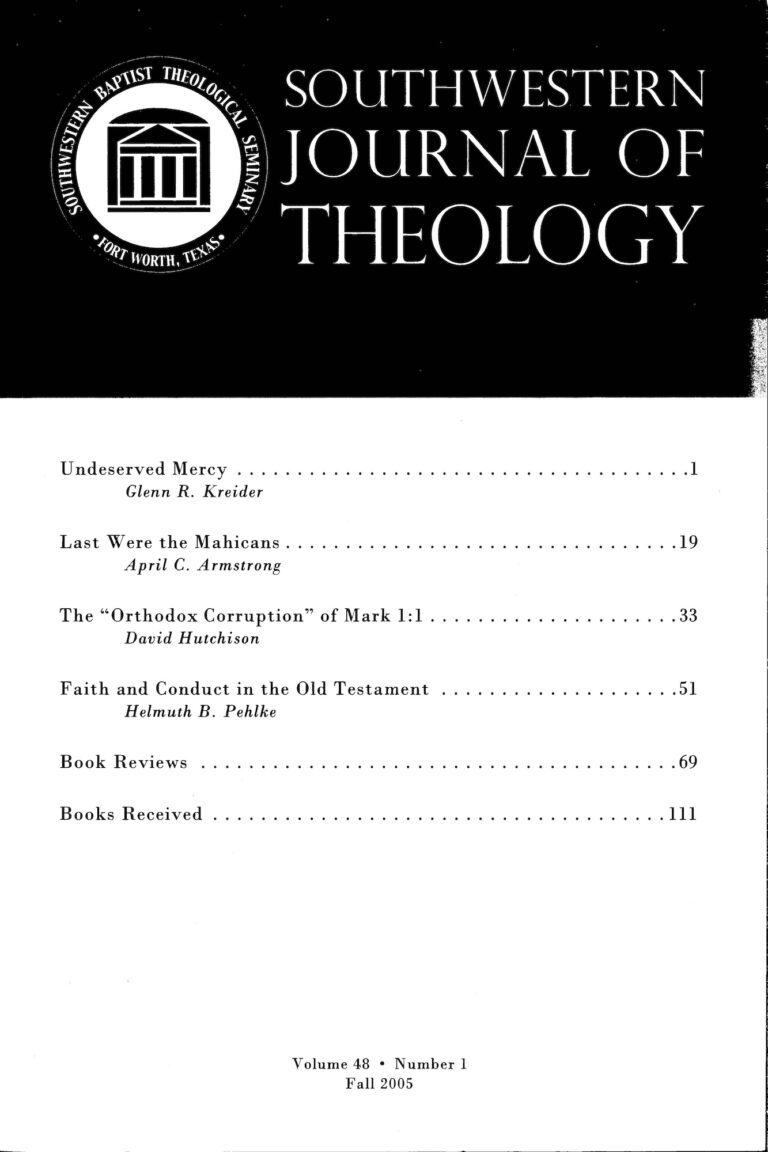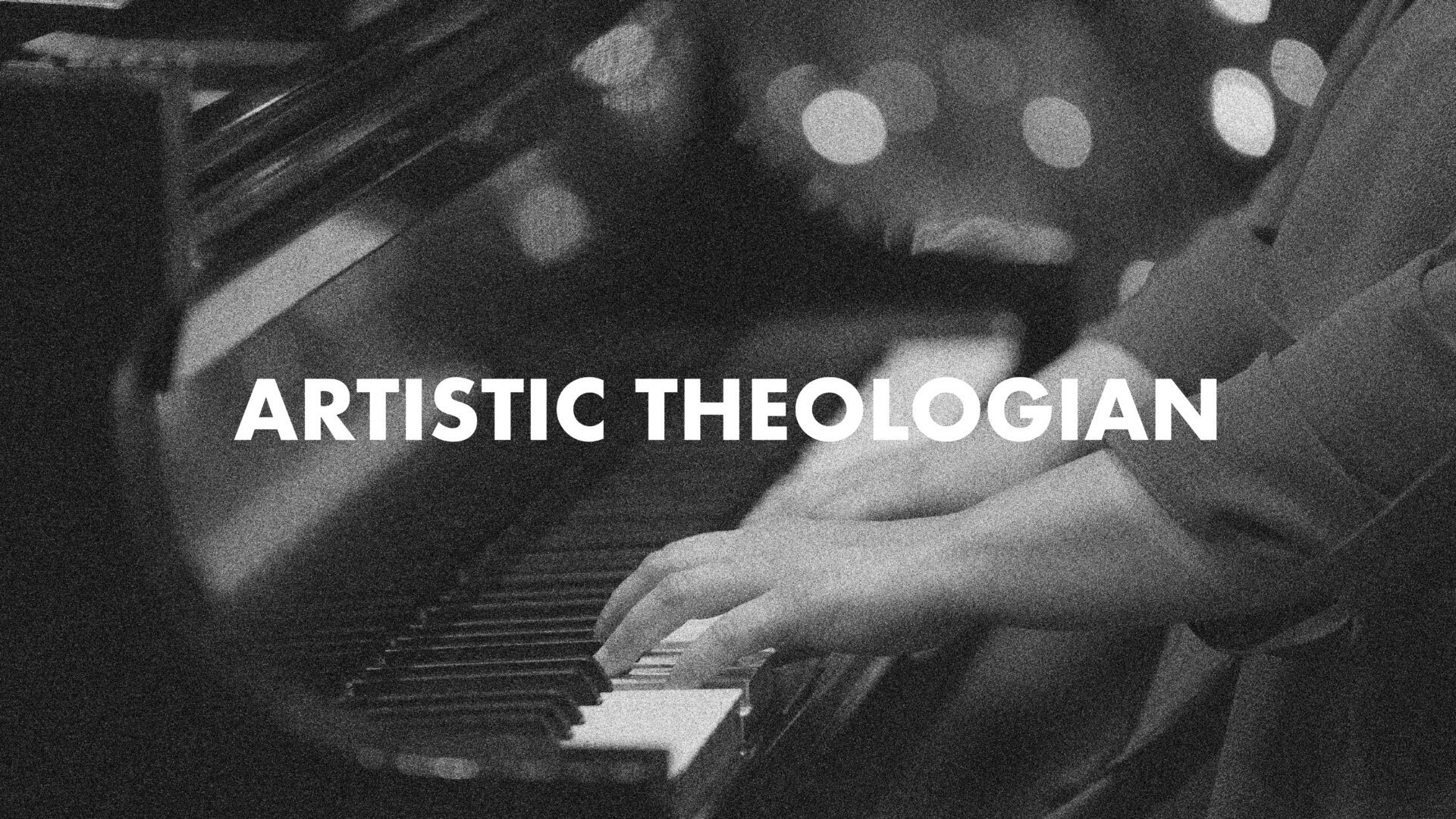
Southwestern Journal of Theology (48.1)
Southwestern Journal of Theology
Volume 48, No. 1 - Fall 2005
Editor: Paige Patterson
Edited by James Stamoolis. Counterpoints. Edited by Stanley N. Gundry. Grand Rapids: Zondervan, 2004. 294 pages. Softcover, $17.99.
The topic of this book is Eastern Orthodoxy and evangelicalism. The question explored—”Are Eastern Orthodoxy and evangelicalism compatible?”—is answered from several points of view. Each chapter consists of an essay addressing the question, an evaluation of that essay by the other four contributors, and a conclusion by the original author.
Bradley Nassif writes chapter 1 from an Orthodox perspective. He has an appreciation for evangelicalism and answers the question, “Yes.” In other words, he makes a case for compatibility. He clarifies that one’s answer depends on one’s perspective. To answer the question from an evangelical perspective suggests maybe the two groups are compatible, but to answer from the Orthodox perspective leads to a “carefully qualified no” (83). Ultimately, Nassif’s yes seems to mean maybe, maybe even no. Such ambiguity is a major weakness of the book not only in this chapter but throughout. With the exception of Nassif, who identifies four key aspects of evangelical identity, the contributors fail to define well one of the two key terms in the book—evangelicalism—nor do they seem to use the term as Nassif describes it. In the end, one is left wondering not only whether evangelicalism and Orthodoxy are compatible, but what exactly an evangelical is.
Michael Horton writes chapter 2 from an evangelical perspective and answers the question, “No.” By contrast, Vladimir Berzonsky answers the question, “No,” from an Orthodox viewpoint in chapter 3. Here the confusion of what it means to be an evangelical continues. On the one hand, Berzonsky seems to think that all evangelicals practice credobap-tism rather than paedobaptism. On the other hand, Horton suggests that Baptists and the many other evangelicals who see infant baptism as a corruption of the Gospel according to the scriptures are outside “that general camp called ‘evangelical'” (188). In fact, a careful reading of Horton’s essay and responses would suggest that he would rather talk about magisterial Protestantism than evangelicalism. At least, these two contributors agree that no means no.
George Hancock-Stefan writes chapter 4 from an evangelical background and answers the question, “Maybe.” Although his appeal to personal experience somewhat softens his argument, he boldly identifies key points at which the Orthodox and many evangelicals disagree. He also moves beyond theological issues to socio-political and cultural issues that divide the two groups.
If Nassif’s essay is the most conciliatory of the five, Hancock-Stefan’s essay is probably the most intense as it describes difficult issues that separate the two groups. Indeed, it clarifies what may be the key issue: different concepts of salvation in relation to “baptism and its significance and the time when it is applied” (213). This issue separates evangelicals and the Orthodox as much as it separates various evangelical groups. Nevertheless, after identifying such difficult questions, Hancock-Stefan’s “maybe” seems really to mean no unless the Orthodox are willing to become evangelicals.
Finally, Edward Kommen writes chapter 5 from an Orthodox viewpoint also answering the question, “Maybe.” Much like the previous contributor, his maybe is really not a maybe. He kindly reminds evangelicals that they hold doctrines and practices that the Orthodox church (read “the true church”) “has formally rejected as unorthodox” (250). Again the reader is left with the impression that “maybe” means no.
As J. I. Packer contends in the book’s foreword, there is a long way to go in the evangelical/Orthodox conversation. This book may help as it introduces evangelicals to Orthodoxy, but I am not so sure that it introduces the Orthodox to evangelicals. Perhaps Zondervan should publish a Counterpoints book clarifying what it means to be an evangelical.





